Metal Furniture Production
Metal Furniture Production
In order to form a piece of furniture it is sufficient to pour molten metals and forge. Metal furniture is produced by forming the material as a whole or by combining different parts. Combining can be made with products such as welding, screw, rivet and so on. Moreover, unlike wood, metals can be found in certain sizes in the market at any time. Various sheets, wire mesh, profiles and rods in certain sizes can be converted into desired forms by bending, folding or combining. If welding or soldering methods are not used as the joining method, the parts can easily be separated and packaged for transport. All these conveniences reveal that it is an important opportunity to produce furniture completely from metal.
Furniture completely from metal, aside from the ease of production, is often produced with the intention of use or aesthetic concern. They are, especially aluminum and alloys, often preferred in outdoor or public areas where resistance is required against corrosion, impact and abrasion; in aircrafts or high buildings where lightweight is important and in archive cabinets where resistance is expected against fire. Before the wide use of plywood and plastics, metals have been used to create all forms. In the second half of the 20th century, when the form became more important, designers shaped various metals with the concern of achieving unique forms. Furniture completely from metal is today often preferred in residences, schools, hospitals, dining areas and various workplaces. Varieties are available as metal chairs, tables, cupboards, couches and bedsteads.
Production of furniture completely from metal is made by assembling different types of metal products or by same type of product and sometimes as a single piece. Single piece furniture is defined by the material that makes it, and even the method of production is also included in the definition: such as cast iron chair, stainless sheet cabinet, wire mesh armchair.
Cast Furniture
Casting is one of the oldest methods for shaping metal. It is possible to pour all metals except copper. Moreover, it is the most economical shaping method. Metals melted with heat can be cast into sand, clay or metal mold. After the casting process, the surface of the piece must be cleaned with various methods.
In history, magnificent palace furniture such as thrones were made from bronze and even silver. Also furniture from iron, mostly urban furniture, and products resistant to heat like candlestick and barbecue were made. These materials are not widely used due to the cost of bronze, the heaviness and non-resistance of iron to corrosion. In today’s conditions, aluminum casting is preferred for both interior and garden furniture with its lightness, corrosion resistance and brightness.
Bronze Cast Furniture
Bronze is harder than copper and is suitable for casting. It is an important feature for casting that bronze does not form bubbles when melted. The material being yellow, hard and resistant and suitable for polish are the reasons of preference. Foundry work made with filled and empty methods of sand, beeswax, clay or plaster reached an advanced level in the 6th century. During the Bronze Age, various pots, jewellery and tools were made in Anatolia, Iran, Egypt and Mesopotamia. In Egypt bronze cast furniture was found in the tombs of Egyptian kings.
Casting was more of thrones, furniture legs and decorations. It is known that the bronze castings were also covered with gold or silver in the Roman period. Sculptural furniture were produced with animal figures and embossed patterns. Bronze being expensive and hard to find has led to the production of pieces rather than the entire furniture and it was used as small pieces, ornaments and coatings on furniture. The widespread use of bronze ornaments on furniture has been with Andre-Charles Boulle in the 18th century. Today, however, furniture with bronze is not preferred because of its cost and fragility.
Iron Cast Furniture
Furniture in which iron was used, such as cupboards, chests, valuables boxes, fireplace blades were mostly shaped by shingled or poured metal until the use of iron pipes in 1900s. From the beginning of the 1800s, a large number of iron cast garden furniture with ornaments have been made with iron casting method. In this period with industrialisation having started, garden furniture such as banks, mailboxes and lighting elements were made of cast iron and covered with embossed ornaments and paint. Iron cast furniture has limited use nowadays due to being heavy and has not been much preferred indoors and this brought the production to mostly in the form of carriers or ornaments.
Aluminum Cast Furniture
Aluminum was discovered in the first half of the 19th century and used in the second half. The weight density of aluminum being very light when compared to iron, steel and copper, being inoxidable and soft increased the value since it was able to be shaped without any need for heat treatment. The development of aluminum casting technology and its widespread use in furniture production was towards 1950s. In this period, aluminum casting was mostly used in the carrying parts of furniture or in furniture frames.
The production of single piece aluminum cast furniture has become widespread in the last 20 years. Plastic versions of some aluminum cast furniture are also produced. This shows the freedom of the forming of aluminum and plastic. Due to the fact that aluminum is a light and soft material, casting method is mostly used to prepare a durable furniture frame. With pressure molding, which is one of the casting methods, more elegant, thin section furniture were produced. British designer Ernest Racein had the parts of aluminum cast framed BA chair (1945), first molded into sand. However, the following chairs were made by pressure molding.
Thus, the sections were thinner and the chair weight was reduced by 25%.The weight density of aluminum is; 1/3 of steel and iron, less than 1/3 of copper and its alloys and 1/4 of silver and lead. The natural aluminum oxide layer covering the aluminum provides resistance against corrosion. Anodizing process can be applied to reinforce the natural protective layer of aluminum and it can also be colored with different additives. This process is of great importance for better protection of aluminum and parts produced from this material against chemical effects. With aluminum casting, it is possible to produce furniture which is resistant to abrasion and corrosion, which is portable and stackable.
Metal Furniture With Forging and Bending Method
It is a method of shaping by force effect such as forging, bending. The part to be shaped in forging method changes shape with the effect of forces. Metal can be forged hot or cold with mold or by hand wıith hammer etc. In the past, metals were shaped by hand, but today they can be forged by hydraulic machines.
Forming metal by forging method is one of the oldest methods such as casting. Before industrialization, when iron was not an off the shelf product in the market, the material was shaped by forging or pouring. Especially in ancient times, furniture, barbecues, candlesticks were made of wrought iron. Nowadays, the materials such as metal sheet and rod are twisted and forged to produce objects of old times.
Bending is a frequently used method to shape metals. It can be done by a simple hand apparatus or with various bending machines. One of the most important advantages of metal material and furniture production is the availability of metal in the market. In this way, plates and profiles of certain sizes and thicknesses are easily accessible. While the skeleton of the furniture is being prepared, the furniture is usually completed by metal bending of the profiles.
A cabinet or sofa can be produced by a single sheet metal. Moreover, even the joining method may not even be used, thanks to the continuity of the material. Mesh, braid and similar forms are made with rod metals. Metal bars have been brought together by bending and creating the surface in furniture making.
Metal Furniture With Sheet Bending Method
Sheets can be found in the market with decorative coating, corrosion resistant, painted or uncoated. Thinner and lighter furniture can be produced with metal sheets when compared to wood. Bending can be done more quickly and easily. Metal sheets are flexible as in other sheet materials, which is an important advantage especially for seating products. In addition, a smooth form can be obtained by bending a single sheet.
Together with metal plate, forms from two or more bending types can be obtained, and with the help of mold, any desired form can be created. The most common indication of the plate’s ability to penetrate into various forms, is the car bodysheet inspiring many furniture designers. However, bending with molding process is costly, and is suitable for mass production. However, simple bends in one direction can be made with simple devices. All office and kitchen furniture is produced in this way. The furniture made with thin steel plate provides durability when in box form. Parts are then combined by welding to increase durability and form shapes such as shelf, door, drawer, cupboard. Aluminum and soft steel is mostly used in bending plate furniture . These two materials are preferred due to bending, light and durable features. The ease of forming and welding of soft steels which are not suitable for casting allows the sculptural forms to be given to the furniture.
A variety of products, such as wire mesh, have also been used to create a whole furniture. Shiro Kuramata’s How High The Moon (1986) armchair is one of the best known examples. The armchair, which stands out with its aesthetics, is presented with the claim of being the lightest of the wide seat category.
The Landi chair (Hans Coray, 1938), produced from aluminum-perforated plate in order to prevent rainwater from accumulating, is one of the first examples made by plate bending method. Seat and backrest plate molded chair can be used in the garden. It is corrosion resistant, lightweight and stackable. Following, entire furniture made up of a single plate was designed. The plate furniture, which was cut in various forms at one time and bent in different directions showed what could be done with this ready material. In addition, office and kitchen furniture, perforated chairs for gardens, as well as sculptural furniture were produced.
In particular, since 1980 some manufacturers have supported the sculptural furniture of the designers and indirectly ensured the spreading use of sheet metal. The durability and flexibility of the plate, which can be found in various thicknesses, have been preferred especially in the production of metal chairs. Metal plate can be cut and bent into a in a specified form and become a metal chair or coffee table or a cardboard box. The furniture can be produced from a single plate without even using assembly method. In addition, furniture can be made with sheets cut in certain size and form and bent in separate directions and joined with weld, screw, rivet etc..
Furniture made with bending metal plate and began with filing cabinets. For the first time in 1920, modular sheet office furniture was made by the standardization of paper sizes. File cabinets, drawers, safe boxes and library shelves created with steel sheet have become widespread in the 1950s. The sheet metal was also used in seating products after the filing cabinets.
The Landi chair (Hans Coray, 1938), produced from aluminum-perforated plate in order to prevent rainwater from accumulating, is one of the first examples made by plate bending method. Seat and backrest plate molded chair can be used in the garden. It is corrosion resistant, lightweight and stackable. Following, entire furniture made up of a single plate was designed. The plate furniture, which was cut in various forms at one time and bent in different directions showed what could be done with this ready material.
In addition, office and kitchen furniture, perforated chairs for gardens, as well as sculptural furniture were produced. In particular, since 1980 some manufacturers have supported the sculptural furniture of the designers and indirectly ensured the spreading use of sheet metal. The durability and flexibility of the plate, which can be found in various thicknesses, have been preferred especially in the production of metal chairs. Metal plate can be cut and bent into a in a specified form and become a metal chair or coffee table or a cardboard box. The furniture can be produced from a single plate without even using assembly method. In addition, furniture can be made with sheets cut in certain size and form and bent in separate directions and joined with weld, screw, rivet etc..
Furniture made by bending sheet metal has advantages in terms of use and production. Lightweight and economical steel filing cabinets with space-saving thin section, outdoor seating products from perforated plates, do it yourself folding chairs, durable and seats with durable and flexible sheets and armchair structure seats, furniture in forms that are very difficult to make with other materials other than plastic and so..


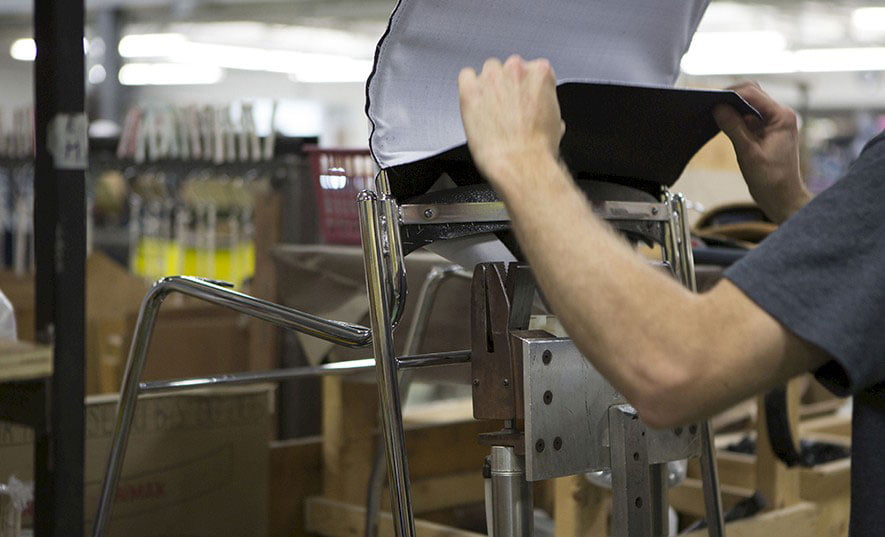
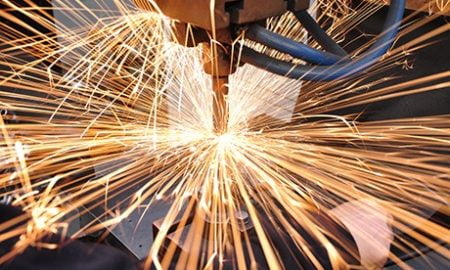
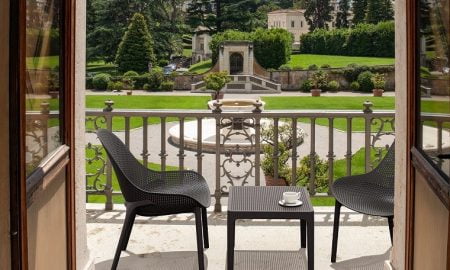
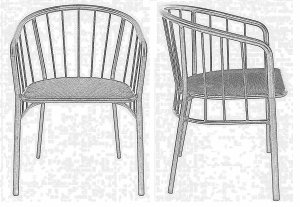
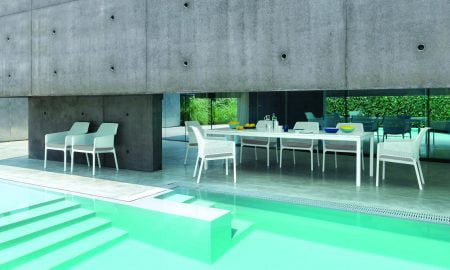
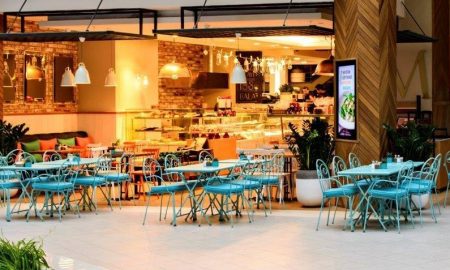
Leave a Reply
You must be logged in to post a comment.